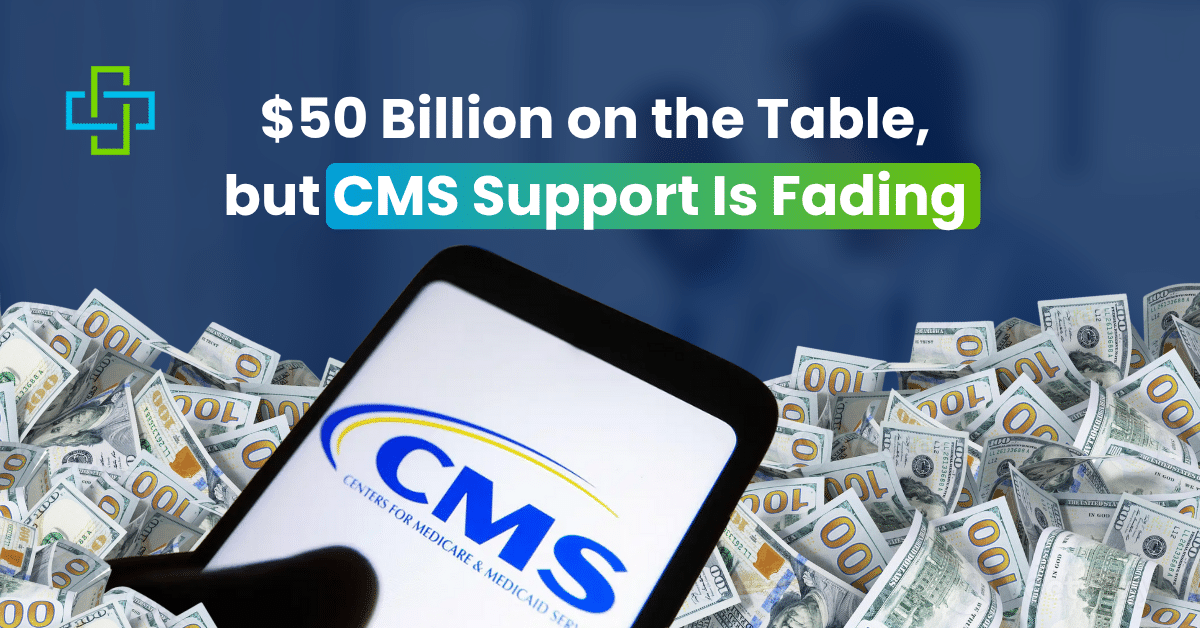States have three weeks to apply for the Rural Health Transformation Program. The Centers for Medicare and Medicaid Services just told them help might not arrive in time.
The timing is terrible. Applications opened September 15 and close November 5. That’s 51 days for states to prepare proposals that will determine their funding for the entire five-year program. There are no revisions allowed. No appeals. Get it wrong, and you’re out completely.
Now CMS is warning that responses to the program’s support email may be delayed. That email was specifically set up to handle technical questions from state public health teams that weren’t covered in webinars.
CMS Just Cut Support During Crunch Time
CMS suspended almost half its staff when the shutdown started. Non-essential services are paused. The agency sent an automated reply to Healthcare Dive saying any delays would be due to the shutdown, directing people to the program website, FAQ page, and webinar recordings instead.
HHS didn’t say how long responses might take during the shutdown. Emily Hilliard, press secretary for HHS, blamed Democrats for the situation.
“The Trump Administration remains focused on reopening the government so HHS can continue delivering critical services that protect the health and well-being of Americans. Congressional Democrats’ decision to prolong the shutdown continues to disrupt these efforts and impact care for millions of people,” Hilliard said.
The Stakes Are Higher Than You Think
The Rural Health Transformation Program represents $50 billion in federal funding for rural healthcare. States can use it for provider recruitment, emergency services, home health, doula services, and new healthcare technologies.
These aren’t small projects. The funding could transform how rural areas deliver care. But only if states can navigate the application process correctly.
“States rely on assistance from federal agencies to ensure they are being correct in their approach and implementation of a policy. So not being able to know that they will have timely advice is problematic,” said Stephanie Kennan, senior vice president of federal government relations at McGuireWoods Consulting.
Emily Cook, partner at law firm McDermott Will & Schulte, called the original timeline “aggressive” even before the shutdown. Now, states face additional uncertainty about whether they’ll get answers to technical questions in time.
One Shot, No Second Chances
From the beginning, this program had a compressed schedule. States got 51 days total to develop their applications. That’s not much time for a program this size and complexity.
The application determines funding amounts for all five years. States can’t revise their applications after submission. They can’t appeal funding decisions. Miss the November 5 deadline or submit a flawed application, and the state loses access to the program entirely.
Tim Putnam, consultant with Rural Health Consulting, described the situation plainly: “The whole Rural Health Transformation Program application process has come about very quickly and been a bit of a guessing game and the shutdown/slow response from CMS isn’t helping things. It is leaving the states to submit their best ‘guess’ as to what meets the CMS criteria.”
States with fewer resources in their public health offices are particularly vulnerable. They need technical guidance more than states with larger, more experienced teams. Delayed responses from CMS could mean the difference between a successful application and missing out entirely.
The Funding Question
Anne Reid, policy director of George Washington University’s Funders Forum on Accountable Health project, pointed out something important about the shutdown’s impact on this program.
Congress allocated $200 million to CMS specifically for implementing the Rural Health Transformation Program in fiscal year 2025. That money came through the One Big Beautiful Bill Act this summer.
“There is funding in place for CMS to carry out activities related to this program, separate and apart from appropriation,” Reid said. “So I just want to be clear that any changes that they’re making in terms of personnel and the ability to manage and administer this program, it appears that they have some discretion there, because they have this implementation funding.”
In other words, CMS has dedicated funding to run this program. The reduced support appears to be a choice about how to allocate staff during the shutdown, not a funding constraint.
What States Can Do?
States can’t control the shutdown or CMS response times. They can control their approach to the application.
Start with available resources. The program website has detailed information. The FAQ addresses common questions. CMS recorded past webinars that walk through program requirements.
Send technical questions to the support email now if you haven’t already. Even with delays, earlier submissions have a better chance of getting responses before the deadline.
Build in extra time for every part of the application process. Assume you won’t get quick answers to questions. Plan accordingly.
Connect with other states working on applications. Informal networks can help clarify confusing requirements when official guidance is slow.
Consider bringing in outside expertise if your state has limited internal resources. Consultants familiar with federal health programs can help navigate requirements without waiting for CMS responses.
For healthcare providers in rural areas, this situation has implications beyond the immediate application cycle. QPP often depends on having enough support infrastructure.
Many registry providers help practices track and report MIPS quality measures. The Rural Health Transformation Program could fund similar support systems at the state level, but only if applications succeed.
The Bigger Picture
This program launched with an ambitious goal: to transform rural healthcare across the country with $50 billion in federal investment. The tight timeline was already challenging. The government shutdown added another obstacle.
Rural healthcare has been struggling for years. Hospitals close. Providers leave. Access to care shrinks. This program offered a chance to reverse some of those trends with substantial federal backing.
But the mechanics of actually getting the money are proving difficult. States need clear guidance to submit competitive applications. Delayed technical support creates uncertainty about whether applications will meet CMS requirements.
The November 5 deadline isn’t moving. States that can navigate the application process despite limited CMS support will secure five years of funding. States that can’t will get nothing.
The government shutdown will end eventually. The Rural Health Transformation Program application window won’t reopen. States have one shot at this, and they’re taking it with less support than expected.
Rural communities are watching to see which states successfully navigate the process and which ones miss out on what could be transformational funding for their healthcare infrastructure.
May You Need to Read:
One Big Beautiful Bill Act Threatens Access to Affordable Health Insurance in 2025
The Reality Behind the Cuts to Medicare and Medicaid in the One Big Beautiful Bill Act





